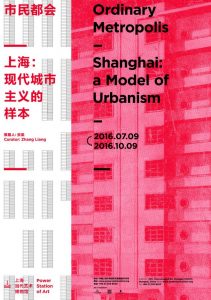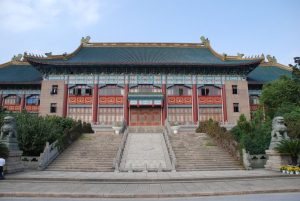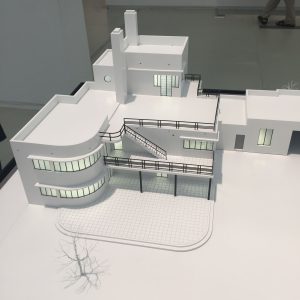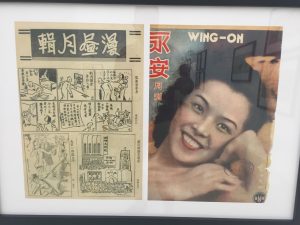 Books published by scholars both in China and abroad have long shown that China’s modernity was created first in Shanghai, in the 1920’s ans 1930’s. The city rapidly caught on with the rest of the World after World War 1, thanks to numerous exchanges and people travelling between Shanghai, and Europe and the USA. Visible intake were the Art Deco building still visible in the city, dance halls, cars, advertising, department stores and all the other elements that are still found while researching today. They also brought fresh ideas, including in town planning for Shanghai, which is the center of a current exhibition at Shanghai Power Station of Art. It has 2 main parts, one about new Shanghai planning from the 1930’s and the other about 1930’s architecture and design, in particular Dayu Doon’s art deco house built in that area.
Books published by scholars both in China and abroad have long shown that China’s modernity was created first in Shanghai, in the 1920’s ans 1930’s. The city rapidly caught on with the rest of the World after World War 1, thanks to numerous exchanges and people travelling between Shanghai, and Europe and the USA. Visible intake were the Art Deco building still visible in the city, dance halls, cars, advertising, department stores and all the other elements that are still found while researching today. They also brought fresh ideas, including in town planning for Shanghai, which is the center of a current exhibition at Shanghai Power Station of Art. It has 2 main parts, one about new Shanghai planning from the 1930’s and the other about 1930’s architecture and design, in particular Dayu Doon’s art deco house built in that area.

The first part of the exhibition is focused on town planning for the new Jiang Wan area: After taking back control of a large part of China, Chiang Kai Shek quickly unified the parts of Shanghai that were around the International Settlement and the French Concession. Creating the Shanghai municipality also made clear that the center of Shanghai was the concessions, so the republican government went on creating a new city center for Shanghai, in what is now Jiangwan area, in today’s Yangpu district. Inspired by Washington DC, the new Civic Center included the new town hall of Shanghai, a museum, a national library and a major hospital. The exhibition shows rarely seen maps and efforts of planning this new district that was only partly built from 1927 until the Japanese invasion in 1937. It also details how land was supposed to be allocated to various functions, the very concept of zoning that is still applied in Shanghai today.

The second part is focused on the art of architect Chinese modernism, in particular Dong Dayou / 董大酉 (Dayu Doon in English) who was one of the main promoter of Chinese modernism. He designed a model house for the area around the Civic Center, that can be compared with international modern style of the time, as well as foreign modernist architects of the time in Shanghai Laszlo Hudec (orginally from Hungary) and Leonard & Vesseyre (from France). Another art deco house on display by architect Poy Gum Lee looked really familiar to me, until I realised it is located opposite from my office (See post Poy Gum Lee’s lost building for more about it).

Beyond the architect work, the exhibition also includes many examples of graphic art and magazines displaying modern style of the time, showing that Shanghai was the door through which modernity came to China in the 1930’s. This modern movement was not only brought by foreigners, but really embraced by Chinese artists and everywhere in Shanghai. After reading many books on the topic, this is the first time I see such an exhibition in China.
3 thoughts on “Ordinary Metropolis – Shanghai: a Model of Urbanism”